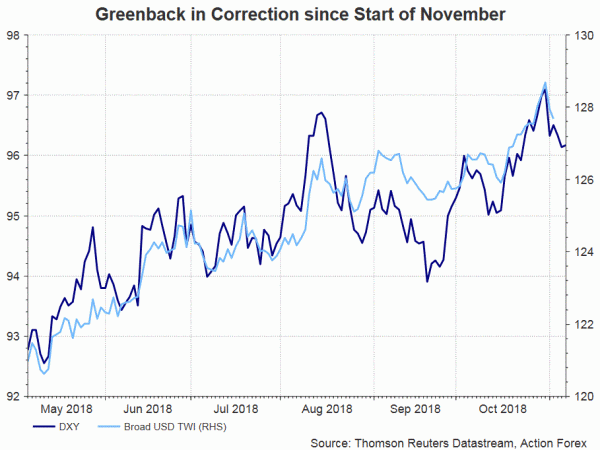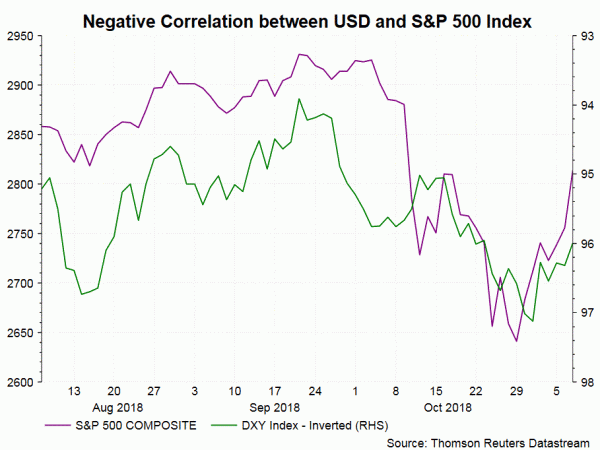The dust is settled on the result of US midterm elections. As polls have suggested, the Congress is split with Republicans continuing the control of the Senate and Democrats is taking over the House.
In our election preview, we have suggested that the most Democrats can do is delaying the legislative process and rejecting some of the new fiscal stimuli. While the Democrats might not want a full-blown trade war against the world, it appears that taking a tougher stance against China’s unfair trade and investment policies towards foreign companies is a consensus between the two parties. They would unlikely be able to repeal the bills passed, let alone successfully impeach the President.
There have been sayings suggesting that US political gridlock is positive for the stock markets. Indeed, S&P 500 has risen more than +3% over the past two days. We believe the rationale of the market rally is that fewer fiscal stimulus should lead to lower chance of an overheating economy. This should in turns lead to deceleration of Fed’s rate hike path, a situation positive for business and household spending. Meanwhile, expectations for a more gradual rate hike path are the reason for US dollar’s recent correction. A weaker currency is usually viewed positively as it helps exports.
Fiscal Stimuli
It is evident that Trump and his Republican Party are seeking a second term in the 2020 presidential election. The key measure they would adopt to secure support is fiscal stimulus. Therefore, if Republicans had been able to retain control of both chambers, more aggressive fiscal stimulus, even another big tax reduction, is more likely in theory. This scenario should raise the probability of economy overheating, resulting in more aggressive Fed funds rate hike. Worse still, the debt-ridden US government (in twin deficits for long), would need to finance the stimuli by borrowing, resulting in higher interest rates in the market.
Fed
Recall that, despite its control over both the House and Senate late year, Republicans found it impossible to pass the tax reform bill without making a number of amendments to get sufficient votes. We expect passage of future of fiscal stimuli would only be harder under a split Congress. Yet, Democrats do not necessarily object all stimulus measures. They are in favor of fiscal stimulus measures that are more beneficial to lower income class. As such, the party might be able to eventually compromise on raising expenditure on social programs and increasing infrastructural spending. In short, we expect less aggressive fiscal stimulus reform in coming years. The US expansion cycle might inevitably be shorter than the one with aggressive fiscal easing. Yet, the Fed might be able to slow monetary tightening, adopting fewer rate hikes to tame down inflation. In this case, we probably could have a more gradual and sustainable growth.
USD
US dollar’s outlook could be gloomier under a split Congress, as the Fed might moderate the rate hike pace. A weaker currency is usually viewed positively as it helps exports. The outlook of USD is also dependent on yield differential between US and other countries. While ECB is expected to end it QE in December, it has pledged to leave the policy rate at exceptionally low level for some time. Struggling with low inflation, BOJ has clung on to yield curve control and record low interest rates. While BOE has signaled to accelerate rate hikes in 2019, implementation still depends on Brexit negotiations. RBA and RBNZ are expected to keep the powder dry in 2019. BOC might be able to catch up with Fed’s rate hike as the USMCA trade deal is secured. As such, the Fed is the only central bank in major economies that is firmly in the rate hike path. This should prevent the greenback from sharp selloff.















